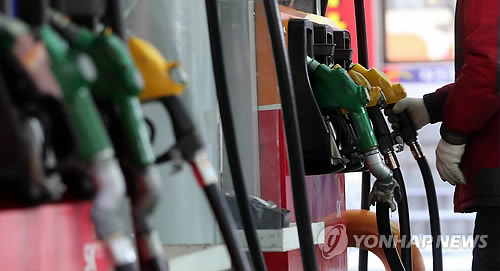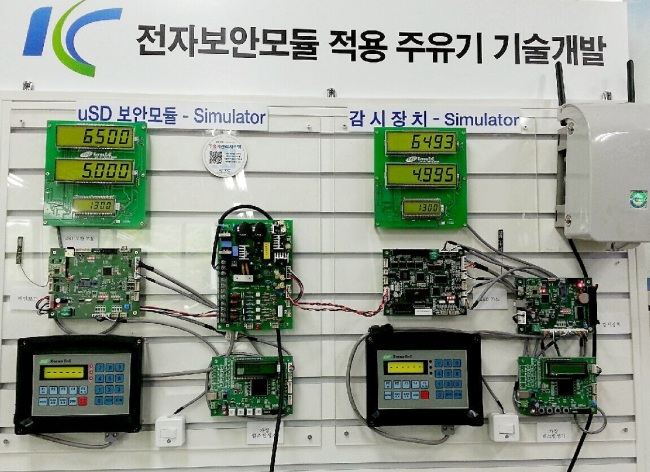Starting July, all newly-manufactured fuel dispensers in South Korea will be equipped with the world’s first IT module that monitors fuel flow in real-time via the Internet, as part of the government’s latest efforts to prevent gas stations from deceiving customers.
Developed by the inspection research agency Korea Testing Certification, the security module, to be attached inside the meter, includes a specially-designed MicroSD card that compares the amount of fuel flowing out the dispenser with fuel output being shown on the meter to detect discrepancies.
The real-time information sent via LTE and 3G networks to the KTC monitoring board in Seoul makes it possible to immediately find out whether a fuel flow meter has been tampered.
“The MicroSD chip is strategically located in the mainboard of the fuel meter so that it is virtually impossible to hack into the system without being detected. It essentially acts as a digital security device,” said Kweon Young-mun, executive director of KTC’s machine metrology industry division.
 |
| Fuel dispensers at a gas station (Yonhap) |
With funding from the Ministry of Trade, Industry and Technology, KTC developed the new security module in conjunction with SK Telecom and engineers at the Korea Minting, Security Printing and ID Card Operating Corp., who put together the MicroSD card ― the key component of the system.
“The module is essentially an extension of the IoT platform,” said a KOMSCO official, referring to the Internet of Things technology, which foresees a network of physical objects and people connected via the Internet.
In a move to enhance public trust, the KTC has also developed a new mobile system utilizing Near Field Communication, or NFC, which allows customers with a smartphone to check the status of a given fuel dispenser by scanning a QR code or entering a serial number via an app.
Together, the security module is expected to ease public concerns about being swindled at gas stations. With evolving hacking programs, the number of fraud cases related to rigged gas pumps saw a sevenfold increase from just 35 in 2011 to 245 in 2014, according to industry data.
Meanwhile, the government plans to work toward not only installing the new security module inside new gas pumps, but also some 180,000 existing pumps at gas stations across the country.
 |
| New security module developed by KTC (KTC) |
“(The Industry Ministry) is still in the process of deciding who will pay for the installation process, which is estimated to cost around 20 billion won ($18.38 million),” said Na Gi-young, senior researcher at the Korean Agency for Technology and Standards, the ministry’s subsidiary in charge of overseeing all legal matters related to the new security system.
“We plan to work with the Korea Oil Station Association to draw up the most appropriate measures,” Na said.
According to the KATS, the Korean government has strengthened legislation regarding fraudulent practices at gas stations. While all fuel dispensers are obligated to receive a checkup every two years, those who get caught rigging fuel meters now face fines of up to 200 million won.
By Sohn Ji-young (jys@heraldcorp.com)



